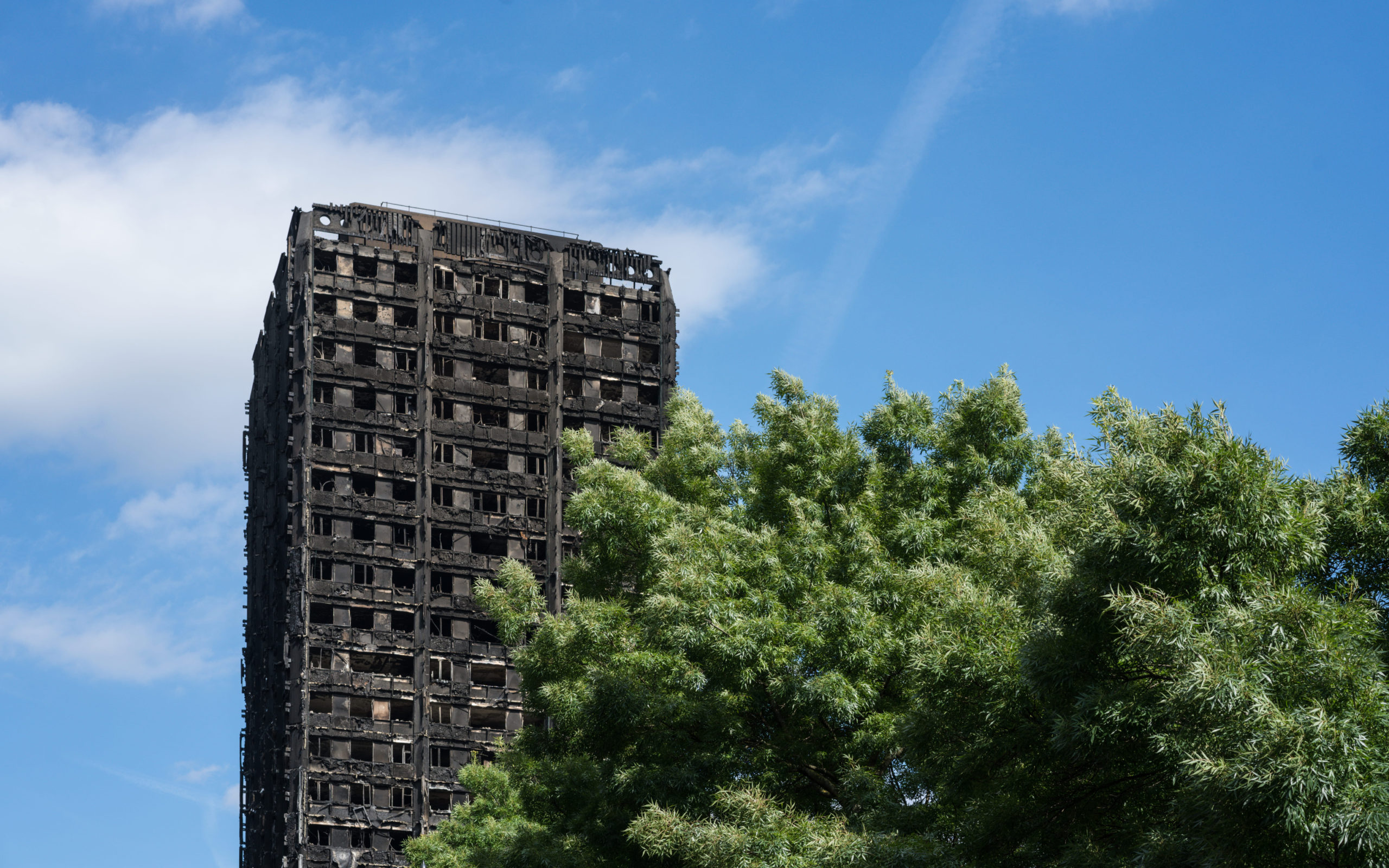‘Are we going to be the next Grenfell?’: The People in Lockdown in Buildings With Fire Risks
by James Moules
14 May 2020

Next month will mark three years since the fire that destroyed Grenfell Tower and claimed the lives of 72 of its residents. In spite of this, numerous properties across the country still have flammable cladding and other fire safety hazards.
While some of the measures introduced by the government in March to stop the spread of coronavirus were lifted earlier this week, people who live in buildings with fire hazards say the lockdown has left them feeling trapped.
Manchester resident Rebecca Fairclough, who lives in a building with combustible insulation, told Novara Media how scared she is.
“These are really stressful times for everyone, but when you are being asked to stay home in a building where you don’t feel safe, it adds another level of anxiety.”
“Ever since we discovered that our building had potential problems, my home hasn’t felt like a home. It’s just something I’m trapped in. Now I’m here 23 hours a day.”
“There’s an increased risk of a fire happening because of the amount of people who are in the building all the time, and therefore increased cooking, candle and electricity use, all of which could cause fires.”
For many residents living in buildings with fire hazards, hearing the news that they would have to stay at home was an awful moment.
“It made me feel so angry,” Manchester resident Natasha Foulkes told Novara Media. “I’m worried about my safety even more now. Whenever someone’s fire alarm goes off, it is a horrendous feeling. It is that horrendous moment of horror – are we going to be the next Grenfell?”
Gail Jeys, a Runcorn resident, also said the lockdown announcement hit her hard. “I cried. I sat and cried. We were going to get a hotel room, but we couldn’t get a hotel room.”
“I have said to my partner I want out. I have been on the edge of a nervous breakdown over it,” she added.
“It is difficult. It is hard. You are going to work and you are at risk and you are coming home and you are at risk of something else.”
Natalie Cureton, who lives in a block of flats in Salford with similar combustible cladding to Grenfell Tower, said she too was scared about being trapped in unsafe accommodation – particularly because there was a fire in her building shortly before the lockdown was announced.
She said: “We are all definitely quite worried. We actually had a fire at our building a few weeks before the lockdown. We had a full evacuation. Since the cladding was discovered, the rules are now to evacuate on hearing it when it used to be to stay put.”
“The residents were all very shaken. We have disabled and elderly residents, so there was lots of concern, especially since we know the cladding promotes the spread of fire.”
“It was very scary, it felt like a nightmare coming true. You worry about the cladding and hope nothing will happen, so for a real fire to happen – it brought it all home and made us realise how dangerous a situation we are in.”
In the budget earlier this year, chancellor Rishi Sunak announced an additional fund of £1bn to help remove dangerous cladding on such buildings – a fund that comes in addition to the £600m already pledged to address these fire safety risks.
However, many residents raised concerns that the problem is not being resolved fast enough, and wonder when the work will be carried out.
In March, Clive Betts MP, chair of the Communities and Local Government Committee, said: “The Committee has already called on the government to fund the removal of all forms of combustible cladding and criticised the pace of change. Nearly 1,000 days since the fire at Grenfell Tower, these issues must now be addressed.”
When approached for comment, a spokesperson for the Ministry of Housing, Communities and Local Government said: “Residents’ safety remains our priority. We are bringing forward the biggest change in building safety in a generation backed by our unprecedented £1.6bn fund to ensure unsafe cladding is removed swiftly from high-rise buildings.
“We have issued advice to the construction and building safety industries to ensure remediation is completed as soon, and as safely, as possible during the pandemic, and have agreed with local councils that this vital work continues.”
But while many residents are suffering from stress, campaigners have been doing their best to help them. One such group, the Manchester Cladiators, are working to raise awareness of building with fire safety hazards and offer residents the support they need in lockdown.
A spokesperson for the campaign said: “Our residents, who are living in buildings with dangerous cladding and a range of other serious fire safety issues, are facing additional stress and anxiety during the current coronavirus outbreak.”
“It is a stressful time for everyone, especially for our residents. We are hugely concerned about their mental health and we continue to try to support that with our Wellness Programme events.”
“We have also set up a sister Twitter account which we use to spread positive stories about how members of the cladding community are supporting each other during these difficult times.”
James Moules is a journalist and contributing editor at redactionpolitics.com.